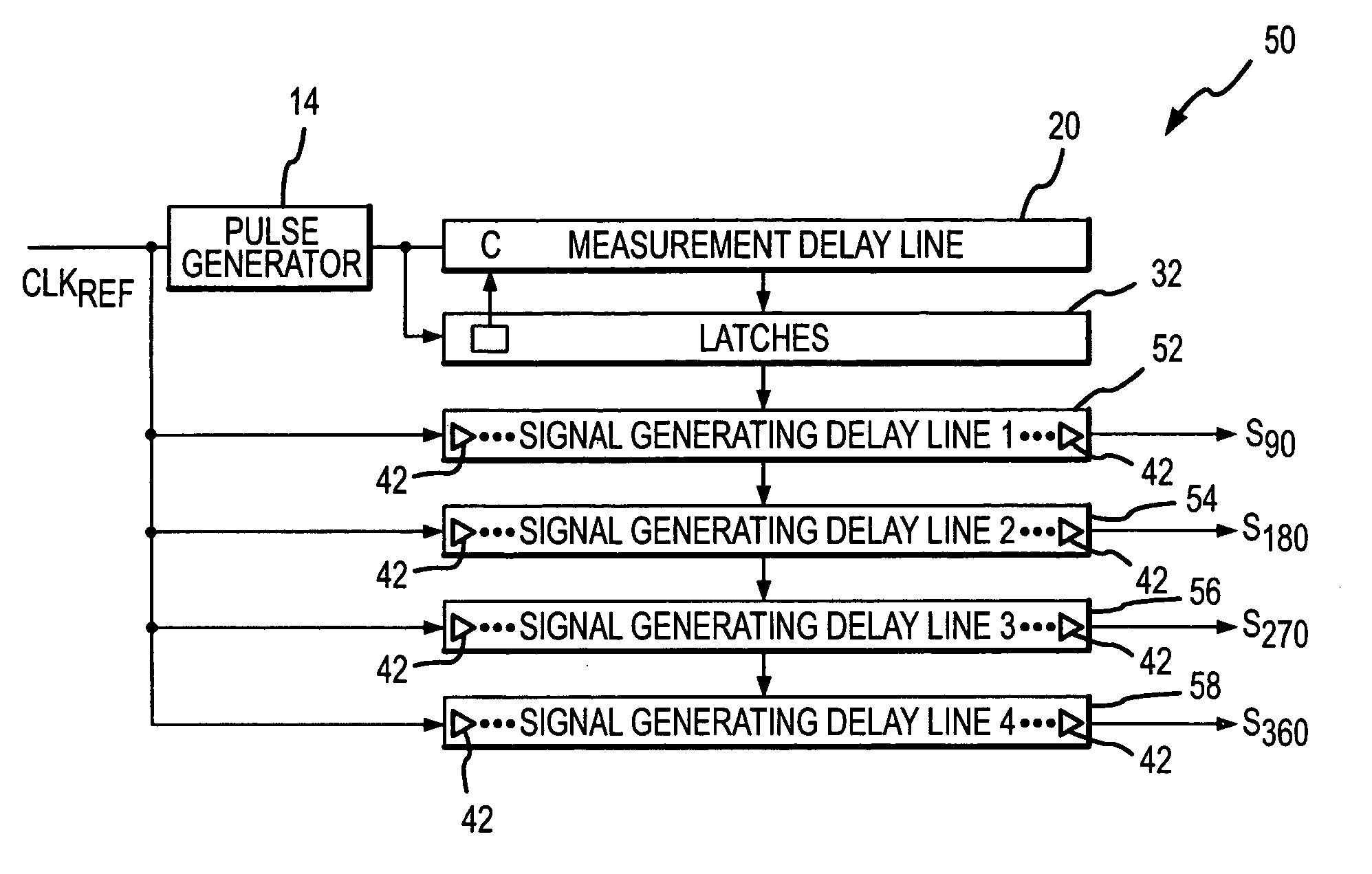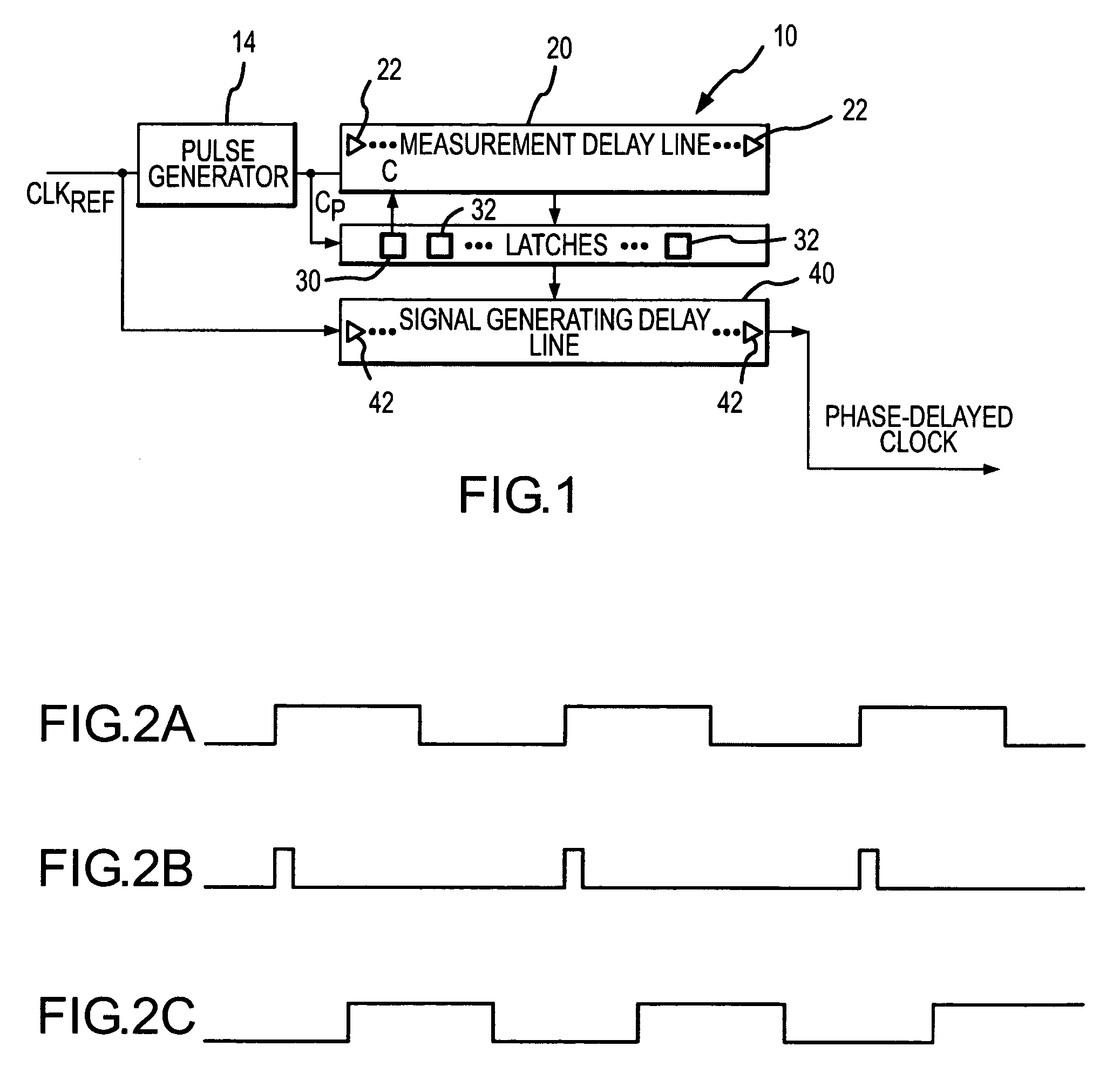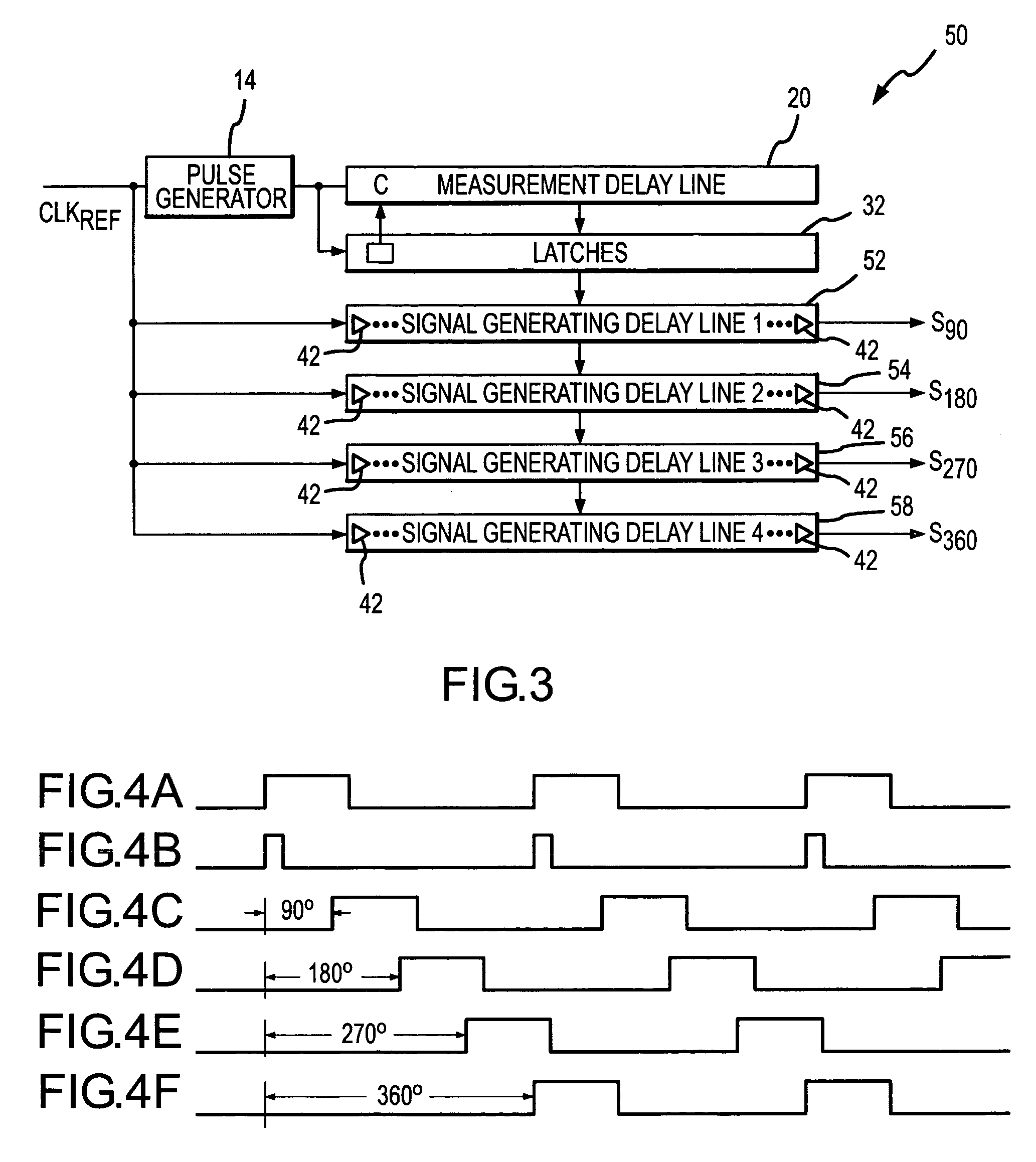System and method for reduced power open-loop synthesis of output clock signals having a selected phase relative to an input clock signal
a clock signal and open-loop technology, applied in the field of low-power system and method, can solve the problems of inability to use a fixed timing circuit, the critical timing of the write data strobe signal, and the disadvantages of closed loop circuits, so as to achieve the effect of greatly reducing the power consumed by the measurement delay lin
- Summary
- Abstract
- Description
- Claims
- Application Information
AI Technical Summary
Benefits of technology
Problems solved by technology
Method used
Image
Examples
Embodiment Construction
[0024]One embodiment of a signal generating circuit 10 for generating a quadrature clock signal is shown in FIG. 1. The circuit 10 receives a reference clock signal CLKREF, which is applied to one input of a pulse generator 14. The pulse generator 14 outputs a short pulse CP responsive to a predetermined transition of the CLKREF signal, such as each rising edge of the CLKREF signal. The CP pulse is applied to the input of a measurement delay line 20, which includes a large number of delay elements 22. The delay line 20 may be similar to delay lines disclosed in previously mentioned application Ser. No. 10 / 854,849, filed May 25, 2004, which is hereby incorporated by reference. The CP pulse is also preferably applied to a counter 30 associated with a set of latches 32.
[0025]The CP pulse propagates through the delay elements 22 in the measurement delay line 20 until the next transition of the CP pulse occurs. The delay element 22 to which the CP pulse has propagated at that time then s...
PUM
 Login to View More
Login to View More Abstract
Description
Claims
Application Information
 Login to View More
Login to View More - R&D
- Intellectual Property
- Life Sciences
- Materials
- Tech Scout
- Unparalleled Data Quality
- Higher Quality Content
- 60% Fewer Hallucinations
Browse by: Latest US Patents, China's latest patents, Technical Efficacy Thesaurus, Application Domain, Technology Topic, Popular Technical Reports.
© 2025 PatSnap. All rights reserved.Legal|Privacy policy|Modern Slavery Act Transparency Statement|Sitemap|About US| Contact US: help@patsnap.com



